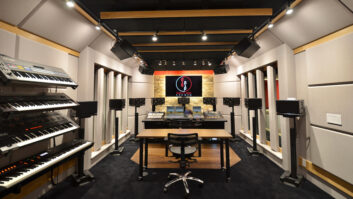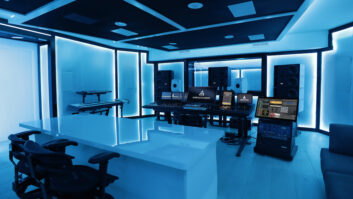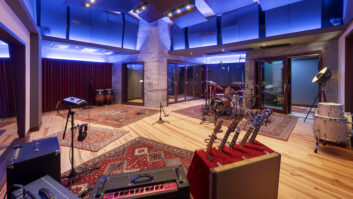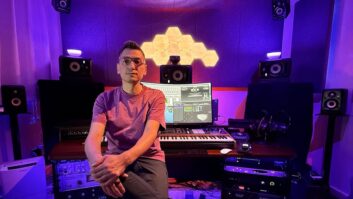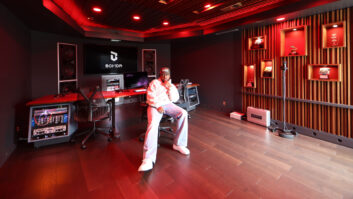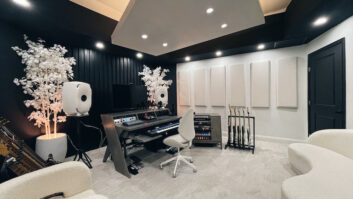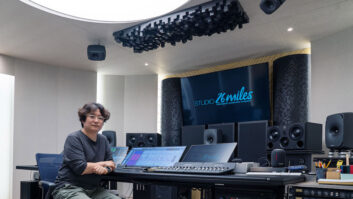
Englewood Cliffs, NJ (June 7, 2021)—Van Gelder Studio—the legendary facility of renowned recording and mastering engineer Rudy Van Gelder—is starting a new lease on life following a recent renovation. The Englewood Cliffs, NJ facility was once described by DownBeat magazine as “a chapel-like space with a 39-foot-high ceiling made of cedar with arches of laminated Douglas fir, which created a natural reverb.”
“All the rooms where important records were made—Columbia’s 30th Street, Media Sound, RCA, A&R—are all gone,” says Perry Margouleff. A studio owner as well as a producer, engineer, songwriter, guitar collector and classic car restorer, Margouleff has been helping owner and engineer Maureen Sickler revamp the venerated facility.
The building was designed by architect David Henken—a Frank Lloyd Wright acolyte—and Van Gelder, opening in 1959 with a single, large live room. (Previously, Van Gelder worked out of his parents’ house, which was custom-built to accommodate his record projects.) In the 1970s, Van Gelder added four iso rooms to better suit the sonic signature of Creed Taylor’s CTI label, which he worked for often.

With the revitalization of the studio, a new generation of artists has an opportunity to record in the space that birthed such milestones of modern jazz as John Coltrane’s A Love Supreme, Lee Morgan’s The Sidewinder and Horace Silver’s Song for My Father. “Jazz is really having a renaissance, and I think there’s a huge community of young people for whom the popular music that people manufacture is not appealing,” says Margouleff.
Sickler met Van Gelder in the early 1980s, when her musician and producer husband Don was working often at the studio. She became Van Gelder’s engineering assistant, working with him for over three decades, and inherited the building when he passed away in 2016, age 91. In recognition of his lifetime achievements, Van Gelder was honored by the National Endowment for the Arts (in 2009), the Recording Academy (2012) and the Audio Engineering Society (2013).
“Rudy always was on the side of the artist,” Sickler says, and was happy to go the extra mile even when record labels had limited budgets. “Many times, we mixed with an artist present but billed the session as if he wasn’t there. And many times, Rudy spent hours fixing, editing and refining tracks that he knew he wouldn’t be paid for, but knew needed to be done for artistic reasons.”
On one of her first sessions, she recalls, she complained about the volume from the four studio monitors. Van Gelder suggested she go and listen in the live room. “It was unbelievable out there, the volume; not like music but just noise. In the control room, it was controlled and beautiful. I learned an important lesson.”
Van Gelder was a pioneering adopter of technologies such as the Fairchild compressor, EMT plate reverb and Neumann microphones. Margouleff has brought the studio’s current complement of equipment, including vintage U 47 and KM 54 mics and a Neve 8024 desk, back to full working order. The 24-input inline 8024, launched in 1972, offers limited bussing but has a direct output from every channel.
“The desk is working perfectly and sounds really great. It’s just spectacular to put a mic up in that room and listen to it. The studio has the magic combination: the right desk, the right acoustics and a good complement of microphones,” says Margouleff.
Van Gelder fully embraced digital audio technology in his later years, recording to RADAR. To better match today’s client expectations, says Margouleff, “I installed a new Pro Tools rig with an Apogee Symphony Mk II [converter]. And I want to get a 24-track analog tape machine back in there.”
Margouleff, who worked with Weezer on its new Van Weezer, recorded the Metropolitan Opera Orchestra’s woodwinds, strings and brass for the album at Van Gelder’s studio last year. And in November 2020, the Sicklers, with producer Phil Coady and talent agent Sam Kaufman, launched Live from Van Gelder Studio. The live streaming series has presented jazz luminaries such as Ron Carter and Joey DeFrancesco.
Margouleff has also been helping the Sicklers to add the studio to the National Register of Historic Places. “What happened between those four walls was pivotal for the jazz community and Black America,” he says.
Van Gelder Live • www.vangelder.live
